Technological
> Future Developments in Agriculture and Environmental Engineering
> Environmental
Optimal Membrane-Process Design (OMPD): A software product for optimal design of membrane gas separation processes. New low-cost ceramic microfiltration membrane made from natural magnesite for industrial wastewater treatment. Unlocking the Potential of Hydrogen Energy Storage — Fuel Cell & Hydrogen Energy Association. By Sean O’Neil Renewable energy sources are experiencing a period of rapid growth, with the U.S.
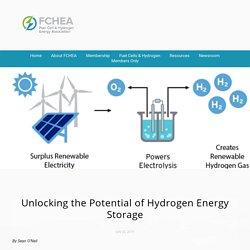
Energy Information Agency forecasting that they will be the fastest growing source of electricity generation in the near future. However, renewable energy sources such as solar and wind suffer from supply and demand imbalances, because their most productive periods are when electricity demand is lowest, leading to a surplus of unused energy, and they are least productive when electricity demand peaks, leading to energy shortages that must be filled by other means. To address this issue, renewables must be supplemented with other dispatchable energy sources, which can instantaneously adjust output to match shifts in energy demand.
A new method of extracting hydrogen from water more efficiently to capture renewable energy. A new method of extracting hydrogen from water more efficiently could help underpin the capture of renewable energy in the form of sustainable fuel, scientists say.
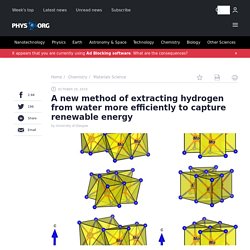
In a new paper, published today in the journal Nature Communications, researchers from universities in the UK, Portugal, Germany and Hungary describe how pulsing electric current through a layered catalyst has allowed them to almost double the amount of hydrogen produced per millivolt of electricity used during the process. Electrolysis, a process which is likely familiar to anyone who studied chemistry at high school, uses electric current to split the bonds between the hydrogen and oxygen atoms of water, releasing hydrogen and oxygen gas.
If the electric current for the process of electrolysis is generated through renewable means such as wind or solar power, the entire process releases no additional carbon into the atmosphere, making no contributions to climate change. Dr.
In vitro meat production: Challenges and benefits over conventional meat production. Alexander, 2011 R AlexanderIn vitro meat: A vehicle for the ethical rescaling of the factory farming industry and in vivo testing or an intractable enterprise?
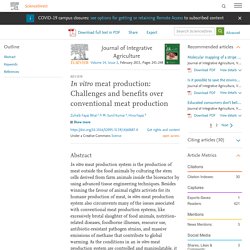
Intersect, 4 (2011), pp. 42-47 Bartholet, 2011 J BartholetInside the meat lab Scientific American, 305 (2011), pp. 65-69 Benjaminson et al., 2002. Riviera - News Content Hub - UK study explores carbon capture technology application in shipping. 21 Apr 2020by Riviera News PMW Technology is conducting a study to evaluate the potential marine applications of its carbon capture technology Marine engineering firm Houlder Ltd will partner with PMW on the study, consulting on key variables within the study to assess the practical viability of the technology and its potential application for shipping.
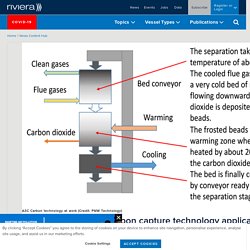
The joint study will evaluate feasibility, costs, infrastructure, impacts and potential benefits of using advanced carbon capture technology for use in decarbonising shipping. Carbon capture and storage is one potential method of reducing greenhouse gas emissions (GHGs) by trapping harmful emissions released from burning fossil fuels and storing them.
UK's biggest carbon capture project is step-change on emissions. Concentrated Solar Power Plants with Molten Salt Storage: Economic Aspects and Perspectives in the European Union. Concentrated solar power plants belong to the category of clean sources of renewable energy.
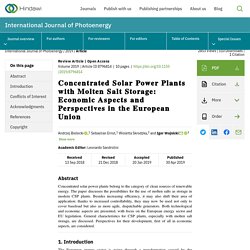
The paper discusses the possibilities for the use of molten salts as storage in modern CSP plants.
CRISPR/Cas Genome Editing and Precision Plant Breeding in Agriculture. FUTURE MEAT. Technological, Regulatory, and Ethical Aspects of In Vitro Meat: A Future Slaughter‐Free Harvest - Bhat - 2019 - Comprehensive Reviews in Food Science and Food Safety. Introduction Global meat production has tripled over the last four decades (Stoll‐Kleemann & O'Riordan, 2015) and is expected to be 16% greater in 2025 than in 2015 (Lynch, Mullen, O'Neill, Drummond, & Álvarez, 2018).
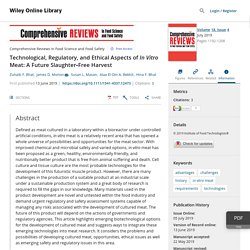
Animal proteins now represent 40% of total global protein consumption and will continue to increase with increasing population (Sans & Combris, 2015). As key drivers in a broad range of environmental issues, current livestock production systems are associated with several problems such as soil and water pollution, loss of habitat and biodiversity, increased soil erosion, and greenhouse gas emissions (Bhat, Bhat, & Pathak, 2014; Bhat, Kumar, & Bhat, 2015; Bhat, Kumar, & Bhat, 2017). To meet the demand of the predicted 9 billion population, the global meat production is expected to more than double by 2050 to reach a total of 470 million tonnes (FAO, 2009), which will only aggravate the associated environmental impacts.
How farming cells instead of animals could reduce greenhouse…
Full article: Unravelling technology-acceptance factors influencing farmer use of banana tissue culture planting materials in Central Uganda. Possibilities for Engineered Insect Tissue as a Food Source. Introduction Animal Agriculture and Food Sustainability The Intergovernmental Panel on Climate Change of the United Nations released a recent report stating that in order to prevent global warming from increasing above 1.5°C, a goal that could prevent the severity of natural disasters correlated with a 2.0°C increase, anthropogenic greenhouse gas (GHG) emissions need to decrease 45% by 2030 (Intergovernmental Panel on Climate Change, 2018).
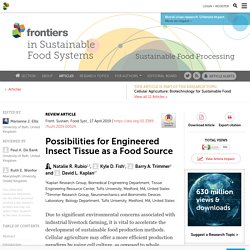
In 2013, the Food and Agriculture Organization (FAO) of the United Nations assessed animal agriculture to be responsible for 14.5% of anthropogenic GHG emissions (Gerber et al., 2013). The FAO identified the principle sources of these emissions to be feed crop production (45%), enteric fermentation (39%) and manure management (10%) (Gerber et al., 2013). Mitigation strategies include optimizing current food systems (e.g., improving breeding, animal health, feed) and developing new products with lower environmental footprints. Cellular Agriculture. Electric air taxi startup Lilium completes first test of its new five-seater aircraft. New Carbon Capture Technologies Just Waiting For IRS Green Light. Lab-grown food is about to destroy farming – and save the planet. It sounds like a miracle, but no great technological leaps were required.
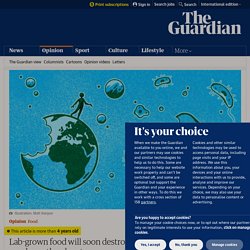
In a commercial lab on the outskirts of Helsinki, I watched scientists turn water into food.
Can lab-grown food save the planet?
It’s encouraging to find agreement across the political divide on the potential of new technologies to combat climate change, reduce animal suffering and supplant massive agricultural subsidies.
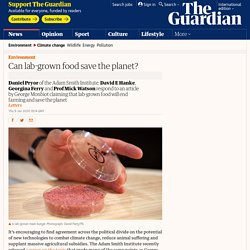
Is Space-Based Solar Power Our Future? (2020)
What is Space-Based Solar Power?
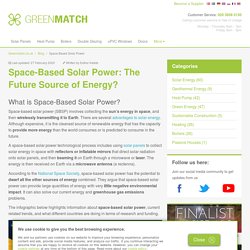
Space-based solar power (SBSP) involves collecting the sun’s energy in space, and then wirelessly transmitting it to Earth. There are several advantages to solar energy. Although expensive, it is the cleanest source of renewable energy that has the capacity to provide more energy than the world consumes or is predicted to consume in the future. A space-based solar power technological process includes using solar panels to collect solar energy in space with reflectors or inflatable mirrors that direct solar radiation onto solar panels, and then beaming it on Earth through a microwave or laser. The energy is then received on Earth via a microwave antenna (a rectenna). According to the National Space Society, space-based solar power has the potential to dwarf all the other sources of energy combined.
Breakdown plastic and sustainable packaging. “79% of the world’s plastic ends up in landfills,” said Peter Rooke, CEO and founder of Art and Science International.
This is especially alarming considering that it’s also estimated that food demand will rise 60% by 2050. “Despite everybody’s efforts on recycling and consumers being better educated and the existence of recycling companies, that’s a number that needs to come down,” he told an audience at the Ingredients Show. Biodegradable and fully recyclable plastic materials offer a solution Companies are increasingly looking to replace plastic in their packaging as the surge towards sustainability continues, and the options for alternatives are rapidly increasing.
Liquid solar energy. Voice search Go to myeni Access with password Rapid Access Low Carbon Liquid solar energy The discovery of solar thermal fuel could solve the renewable energy storage problem.
'Artificial photosynthesis' project enters second phase.
The Rheticus II project combines bioreactor and renewables-powered electrolyser to produce industrial chemicals from carbon dioxide. Solar-powered trains: the future of rail?
The environmental crisis currently hitting the world has called for all sectors to play their part in cutting down emissions and limit climate change.
UK's first environmentally friendly road on housing development. Pilot plants of membrane technology in industry: Challenges and key learnings. How Big Data Is Transforming Environmental Sustainability. Top GIS Technologies in 2020 & Beyond - USC GIS Online. Eight emerging technologies that could impact geospatial industry. The UK Geospatial Commission has identified eight emerging technologies that could impact the geospatial industry and grow UK economy.
Technological innovations against pollution in aquatic environments. How AI could save the environment. Artificial intelligence techniques are now used to monitor endangered species, track diseases, and optimize crops.
Careers special: How can the next generation meet future farming challenges? - NEWS - Farmers Guardian.










